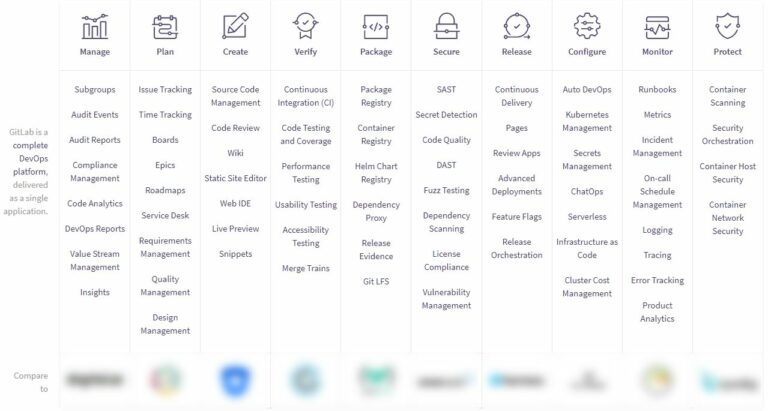In previous articles, we’ve learned why SEO must be a consideration for early-stage startups, as well as SEO strategies to help you be competitive in the SERPs early on.
Now, we’ll look at another key stage in the business lifecycle of an early-stage startup — developing your go-to-market strategy and initial product launch.
As Sean Ellis said, scaling growth before having product/market fit is the fastest way to kill your startup.
In your early days and as you plan your initial product launch, there are a lot of risks. You’re under pressure to meet deadlines from various stakeholders and achieve milestones that can be tied to investment.
Without a robust go-to-market strategy, blindly investing in growth can do more harm than good.
What you’re looking for is product-market fit, which means your product/solution effectively satisfies a certain market segment. Getting this fit is crucial for short-, and long-term growth, as well as short- and long-term monthly recurring revenue (MRR) generation.
Developing a Go-To-Market Strategy
There’s no shortage of blog posts on how to develop a viable GTM strategy, but the most successful ones I’ve seen all contain elements of:
- Customer interaction and interview-like interactions, with both leading and open-ended questions to help identify specific use cases and to identify the timing of your solution.
- A form of A/B testing with a group of potential users in order to validate the product and highlight any use issues (for edge cases, or compatibility with other systems being used by the target market).
- A feedback method from both of the aforementioned groups, to determine exactly how your potential audience sees your product, the value it brings to them, and their willingness to pay for that value.
From these three activities, you can better inform:
- Your pricing strategy.
- Your core market messaging.
- An understanding of who your competitors are.
- An idea of how your audience will use your product, and in conjunction with which other products.
More importantly, this process helps you do something that is vital to your success but can be hated on by other stakeholders within the business – it helps you reduce your initial audience and market so you know who to target first.
Targeting a Narrower Audience with SEO
Depending on your niche, trying to do SEO for a narrower audience can sometimes mean that third-party keyword research tools start to fall down.
This is particularly true in emerging tech markets, as search volumes will be lower or phrases may not even be picked up by tools due to low/non-existent PPC spend and advertising data.
This is where your GTM strategy (and common sense) can help you develop a targeted SEO strategy for your target launch audience segment.
It can help you take your SEO strategy from whack-a-mole keyword targeting to developing content and user journeys that create value propositions.
It’ll help users better forecast their experience of your product/service.
1. SEO Helps You Understand Your Real Competitors
Everyone who sells products online is competing with Amazon and eBay, at least in theory.
However, in reality, few companies are truly competing with them.
Everyone with a SaaS product has a narrow set of competitors, but they will most likely also overlap with other SaaS products. This is something you need to factor into your marketing, as your potential customers will be considering them as options when comparing.
There’s a good example of this acknowledgment on Gitlab’s homepage. There, the various product features are broken down and categorized, enabling visitors to make quick comparisons to other larger tool suites and more niche options:

Taking this approach also helps disprove an assumption I hear a lot from some product markets in SaaS, and that is: “People who want our product wouldn’t be interested in Brand X.”
In reality, we control very few variables in the customer’s decision-making process, so we can’t say that at all.
2. Get Focused with Keyword Research
As mentioned, when targeting a new market segment or addressing problems from a different angle, the market might not be mature in terms of “search,” so there may be little data to go after.
This means you need to look to other sources to identify keywords. But more importantly, this will force you to look for the messaging your audience seeks around the problems they’re facing.
You need to refocus on the solutions your product offers to determine the problems your audience will be searching with, and then where they will be searching.
For most tech/SaaS products, places like Quora and StackOverflow are good places to start. This is especially true if your audience is more systems, infrastructure, and engineering-focused.
If your audience is a more general marketer, then places like Facebook groups, Slack communities, Reddit, and even product-specific forums are good places to go and mine data.
It is important, however, to remember to not enter these open forums and communities with a sales-first message. You’ll likely damage your brand before you’ve even launched.
3. Experience Forecasting Informs Conversion & Retention
A lot of marketing strategies focus heavily on initial user acquisition, and I’m not saying this is a bad thing.
But when you’re going to market with a new product or service that you hope to build your company – and future products and services off the back of – you also need to factor in retention strategies.
Retention is often condemned to post-conversion activities and elements like customer service.
However, when done right retention starts during the discovery, consideration, and conversion phases.
This is something I call experience forecasting. Essentially, there are a number of variables in the customer buying process we don’t control. In addition, all customers will be subject to a number of personal experiences, their own expectations, and estimations of “good,” as well as a number of other supposedly irrelevant factors.
Our messaging needs to highlight that the product/service can meet the user’s needs. And it needs to do so in a way that best enables the user to accurately estimate how closely the service delivery will meet their expectations.
When that forecasted experience is met (or closely met), the user will be happy and likely to either convert their trial into a subscription or extend their subscription with you.
Get Granular with an SEO-Informed Go-To-Market Strategy
SEO gives you the insight to develop your most successful go-to-market strategy.
Over the long term, it’ll support the longevity of your product and the brand as a whole, as well.
More Resources:
- SEO for Startups: 4 Keys to Success
- Content Marketing for Startups: How to Succeed Even Early On
- Core Web Vitals: A Complete Guide
Image Credit
Screenshot taken by author, July 2021




